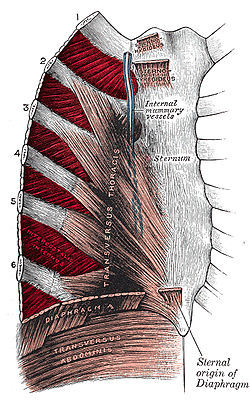Intercostal_muscle
Intercostal muscles
Muscle groups between the ribs which form and move the chest wall during breathing
The intercostal muscles comprise many different groups of muscles that run between the ribs, and help form and move the chest wall. The intercostal muscles are mainly involved in the mechanical aspect of breathing by helping expand and shrink the size of the chest cavity.[1]
This article relies largely or entirely on a single source. (March 2021) |
